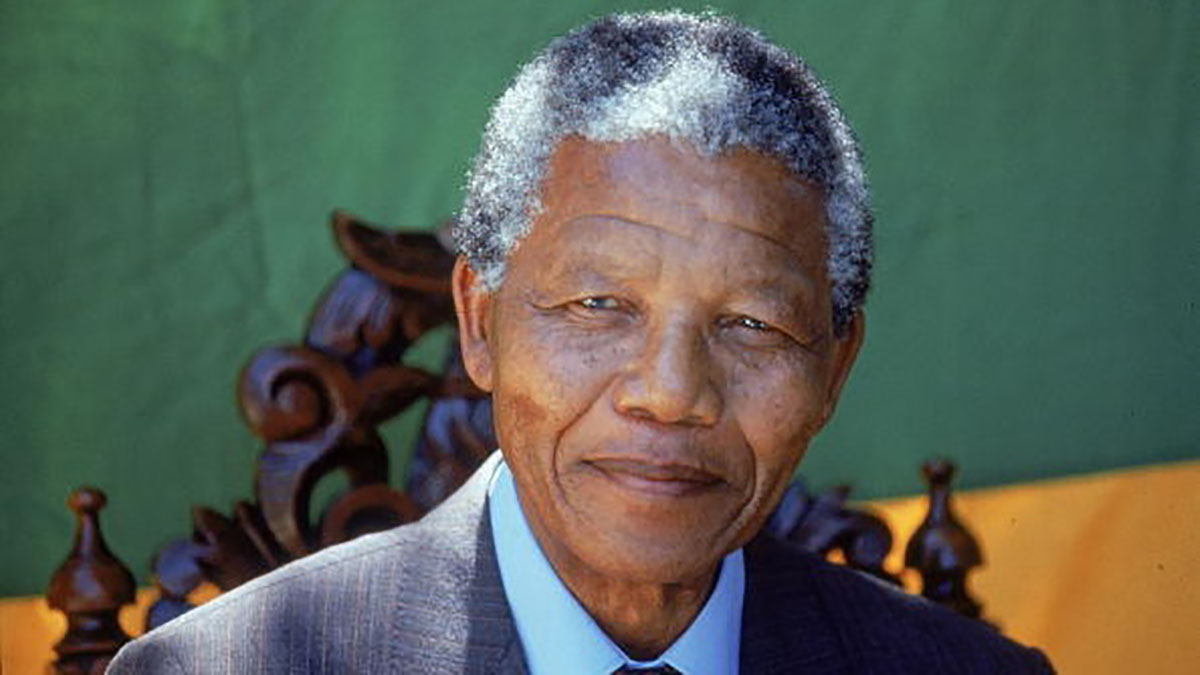Point 'Em Out is an editorial series where Blavity Arts writer Ida Harris explores the latest and the greatest in Black art. Thanks to modern-day technology, we get to be virtual consumers of yesterday's icons and today’s most innovative Black artwork, and — if we're lucky — the Black geniuses who produce them.
Very few humans reach global greatness in their lifetime. Yet, when they do, it is due to some noble accomplishment that us mere mortals don't even have the audacity to execute, much less even dream of. Often they are public figures who sacrifice themselves for the greater good. These types of people trade in their basic being to carry the weight of the world upon their shoulders. Nelson Mandela is these types of people.
It seems that Mandela lived most of his revered life as a global servant, on the public stage, from his early years as a student activist to later years as president of South Africa. The world over has witnessed Madiba, which he is affectionately called, protest racial laws in his fight against apartheid in South Africa as a ranking member of the African National Congress (ANC). He captivated followers as he resisted "white domination" and "Black domination," as he strived for "the ideal of a democratic and free society," which he discussed in his famous four-hour "Speech From the Dock" in 1964.
Mandela served a 27-year bid for sabotage and was incarcerated for some time at Robben Island, the most infamous prison in Cape Town. Many reveled in Mandela's reemergence into society when he was released from prison in 1990 and celebrated when he became the first democratically-elected president of South Africa. He went on to win a Nobel Peace Prize in 1994.
Because Mandela's pedigree as an iconic freedom fighter developed under the world's eye, one might assume to know all there is to know about his awesome sauce. However, it may be news to know that our dopest African leader was a visual artist on the low. Reproductions of his works are available through House of Mandela, a digital gallery preserving Mandela's creative legacy, which is run by his family.
At the age of 83, Mandela began painting to "step out of his comfort zone and turn his memories into art," his daughter Dr. Makaziwe Mandela, wrote on the gallery's website. The statesman started with the Struggle Series, a collection of sketches on paper depicting images of a fist, a set of hands bound by handcuffs, hands breaking handcuffs, a hand holding another hand, a child's hand nestled in an adult's hand and an artist statement. Each image symbolizes and is titled for its respective phase in the struggle: struggle, imprisonment, freedom, unity and future.
Robben Island is another collection of colorful charcoal drawings that highlight aspects of the prison; "The Window," "The Lighthouse," "The Harbor," "The Church" and "The Cell," which features Table Mountain in the distance. In this series, viewers get a whiff of Mandela's visual memory.
The most profound image is a stand-alone piece titled "27," which obviously represents each year Mandela was held captive in a concrete jail cell due to his social justice activism, recognizing freedom requires a fight.
Born July 18, 1918, Mandela lived till the ripe age of 95. Although he transitioned in 2013, his legacy is infinite. It is refreshing to learn that despite his radical history and political and social background, he made space for his creative spirit. Along with every piece of himself he leaves us, his artistic footprint is just powerful.
101 birthday blessings to a real one.
